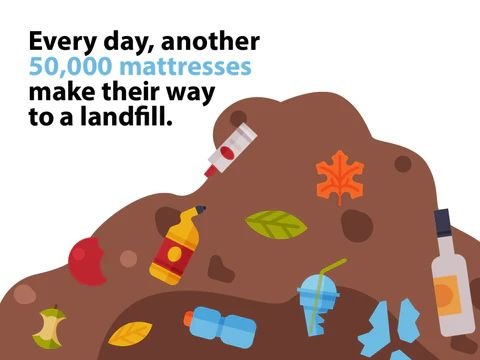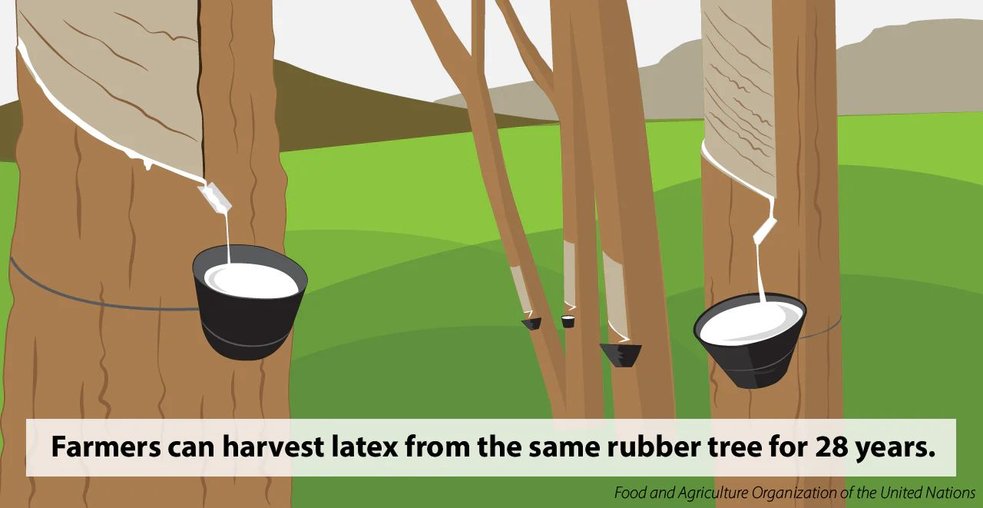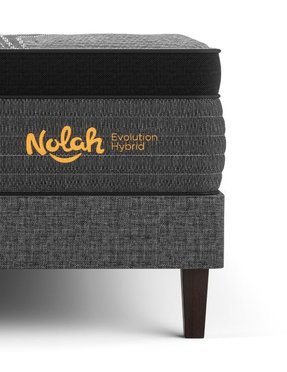How to Find an Eco-Friendly Mattress
What Makes a Mattress Good for You, and the Environment?
In recent years, the adverse effects of burning fossil fuels and depleting natural resources have become all but impossible to ignore. While prompting change is never easy, many corporations and individuals have taken action to minimize their ecological footprint.
How many people now abide by eco-conscious principles while shopping? 2020 consumer insights from IBM highlight this shift in global purchasing trends. The report found that 57 percent of consumers are willing to change personal purchasing habits to help reduce their negative environmental impact.
This trend toward clean and eco-conscious consumerism has slowly but surely pushed the mattress industry in a positive direction. Many companies within the sector—an industry historically fraught with environmental dangers—have made significant strides toward sustainability.
How Traditional Mattresses Affect the Planet
When it comes to environmental impact, traditional mattresses have a bad reputation, and for legitimate reasons.
They're notoriously hard to recycle due to the lack of infrastructure in most states. Reselling or even donating a used mattress can also prove difficult due to sanitation concerns.
As a result, most mattresses end up in landfills, where they consume a lot of space. The Mattress Recycling Council estimates that 50,000 mattresses make their way to America's landfills every day. Depending on the materials used, they may very slowly decompose in the landfill or never fully decompose at all.

Many mattresses, particularly outdated innerspring, may also contain harsh chemicals. Some flame retardants, volatile organic compounds (VOCs), and other chemical additives pose health risks for sleepers and contribute to landfill contamination.
The Mattress Industry Goes Green
IBM's consumer insights report demonstrates the public's willingness to make greener purchases and highlights how companies can meet their eco-conscious expectations. When asked to assess eco-friendly offerings and brand commitment to green initiatives, the majority of respondents ranked the following attributes as at least “moderately important” to them:
- Offering clean products (78 percent)
- Sustainability and environmental responsibility (77 percent)
- Supporting recycling (76 percent)
- Using natural ingredients (72 percent)
How have mattress companies responded to this shift in consumer preferences and taken the initiative to reduce their environmental impact? According to Business Wire, mattress manufacturers are "increasingly focusing on providing mattresses made up of organic and natural materials, such as natural latex, organic cotton, organic wools, and other organic materials." The organic bedding market has also followed suit.
As a consumer, you now have more natural mattress options than ever before. Keep reading to learn how to find the best eco-friendly mattress for your eco-consciousness and comfort needs.
Defining “Eco-Friendly” in the Mattress Industry
When it comes to responsible consumerism, it can be hard to cut through the noise of marketing buzzwords—and the mattress industry is no exception.
If you have a set of standards for making major purchases, such as a new mattress, you need to understand the terms used within the industry to make sure the product you buy aligns with your principles. As you shop for an eco-friendly mattress, you'll likely run into the following descriptors.
Botanical
This term encompasses anything plant-derived, like natural latex and cotton fibers. You may also come across mattress materials that are primarily, but not entirely, plant-based, like Tencel™ and soybean foam.
Natural
"Natural" usually means exactly what you'd think; it refers to materials sourced from nature, not synthetically made.
You’ll want to pay close attention to this descriptor (or the lack thereof) when shopping for a latex mattress since natural, synthetic, and blended latex foam are all popular materials. To steer clear of artificial latex, look for terms like "natural latex," "Talalay latex," "Dunlop latex," and "organic latex." Remember to check the product description for any synthetic fillers as well.
Non-Toxic
Many mattresses contain harsh chemicals, so "non-toxic" and "toxin-free" labels aren't just gimmicky selling points—they call out significant differences in the manufacturing process.
As previously mentioned, common chemical additives or byproducts found in many mattresses include harmful flame retardants and VOCs.
Organic
"Organic" refers to how something is grown or manufactured. It pertains more to the production process than the product itself.
When it comes to plant-based fabrics and fillers used in mattresses, an organic label indicates organic farming practices, like not using pesticides, organic fertilizers, or genetically modified seeds. It also means the absence of harmful chemicals during processing.
For animal-based mattress materials such as organic wool, organic refers to a chemical-free environment for the sheep and toxin-free processing.
Sustainable
Sustainability has three primary components: environmental, social, and economic. For now, we'll focus on environmental sustainability, which means to sustain or create "the conditions under which humans and nature can exist in productive harmony to support present and future generations."
A truly sustainably-made mattress meets high environmental standards for both sourcing and manufacturing.
Natural latex exemplifies a sustainable material used in mattresses and sleep accessories like mattress toppers and pillows. With proper harvesting, tapping rubber trees for sap to make latex doesn't hurt the trees.
During manufacturing, mattress companies that value sustainability leverage processes and technology to reduce water and energy consumption. They also focus on the durability of their products to reduce the number of new mattresses people need in their lifetime.

How Green Are Common Mattress Materials?
Now that you have a rundown of eco-friendly mattress terminology, let's dive into the details and discuss the environmental pros and cons of the most common mattress materials. We’ll start with the core components or basic mattress “types.”
Traditional Innerspring Systems
Before foam emerged as a mainstream mattress material, virtually all mattresses had innerspring support systems, and they're still popular today.
Unfortunately, innerspring mattresses don't hold up to green standards. Usually made with steel coils, traditional mattresses don't fully decompose. They aren't the worst mattress type for the environment, especially if their other components are all-natural, but innerspring mattresses are far from the greenest option.
Plus, a lot of traditional innerspring mattresses (especially older models) contain harmful chemical fire retardants.
Individually-Wrapped Coils
Like innerspring systems, individually-wrapped coils typically use steel. However, many modern mattresses with individually-wrapped coils, including hybrids, use recycled steel to cut down waste. Mattress makers can also use natural or recycled fabrics to wrap the coils.
Latex
Natural, non-synthetic latex dominates the green mattress market. As previously mentioned, manufacturers make latex foam from rubber tree sap, and tapping for sap doesn't harm the trees.
Rubber tree farmers can tap a tree for its latex sap for about 28 years, and the trees often live for 100. As long as the rubber trees are responsibly grown and harvested, latex makes for a sustainable mattress material.
Plus, most natural latex mattresses last for 10 years or more, meaning you only need to replace your bed about once every decade.
Soybean Foam
From milk to mattress foam, soybeans are used for a wide range of plant-based products. As a memory foam alternative, soybean mattresses offer comfort and contouring.
However, shoppers should know that soybean foam contains more than just natural soy. Most soybean mattress foam is partially, if not predominantly, petroleum-based.
What About Mattress Fabrics and Fillers?
Mattresses have a primary support system (usually innerspring, foam, or latex), but they also contain various fabrics and fillings—some more sustainable than others. A few of the greenest mattress ingredients include:
Cotton
Often used for mattress covers and extra padding, cotton is a natural option. Consider a mattress with organic cotton for the fabric components.
Wool
Many modern mattresses use wool as a natural flame retardant. With a wool layer for defense, a mattress doesn't need chemical additives to resist flames.
If you want to put the sheep's well-being and the environment first, opt for a mattress featuring only organic wool.
Safe, Sustainable, and Organic Mattress Certifications
Aside from researching the materials used in a prospective new mattress, you can check the box or online product description for any environmental certifications. Third-party testing can give you confidence in the claims made by mattress companies.
CertiPUR-US®
CertiPUR-US® certified foams do not contain ozone depleters, PBDEs, TDCPP, or TCEP flame retardants, mercury, lead, or other heavy metals, formaldehyde, or Consumer Product Safety Commission regulated phthalates. They may contain up to 0.5 parts per million VOCs.
Forest Stewardship Council (FSC)
Forest Management Certification from the FSC “confirms that the forest is being managed in a way that preserves biological diversity and benefits the lives of local people and workers, while ensuring it sustains economic viability.” In the mattress world, you may see latex sourced from certified forest operations.
Global Organic Latex Standard (GOLS)
GOLS certification guarantees that latex components contain at least 95 percent natural latex and minimal chemical additives. Certification requires organic harvesting, and the entire manufacturing process must meet high standards for environmental and social responsibility.
Global Organic Textile Standard (GOTS)
GOTS certification is the “worldwide leading textile processing standard for organic fibres, including ecological and social criteria, backed up by independent certification of the entire textile supply chain.” Common textiles used in mattresses that may have GOTS certification include cotton and wool.
GREENGUARD
To qualify for GREENGUARD Gold certification, mattresses must contain zero or only trace amounts of VOCs.
Oeko-Tex®
Textiles with Oeko-Tex® Standard 100 certification are tested for harmful substances, such as VOCs, and guaranteed safe for human health.
US Department of Agriculture (USDA) Organic
Wool, cotton, and latex used in mattresses can have USDA organic certification. You can learn the basics of organic farming and handling practices here.
Nolah mattresses use CertiPUR-US® certified foam or natural latex.
Cutting the Environmental Costs of Sleep Comfort
With more and more mattress companies launching natural product lines, consumers have plenty of green choices. You don't have to pick between sustainability and comfort; with a little bit of research, you can find a mattress that fits your unique sleep preferences and meets your standards of eco-friendliness.
If you're in the market for a new mattress, don't settle for a bed that emits excessive VOCs or contains unnecessary synthetic materials. Take the time to find a mattress that lets your body—and your conscience—rest easy. Interested in Nolah’s natural mattress option? Check out our latex hybrid mattress, the Nolah Natural.
You May Also Like These Articles
Don't Sleep on Exclusive Offers
Sign up for our newsletter, and you'll be the first to know about discounts, deals, and what's new at Nolah.
Ready for Bed?
